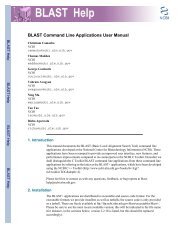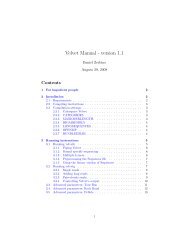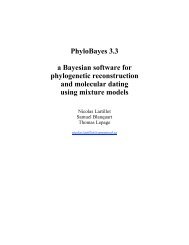PAUP* 4.0 Beta: Command Reference --Draft Version 3--
PAUP* 4.0 Beta: Command Reference --Draft Version 3--
PAUP* 4.0 Beta: Command Reference --Draft Version 3--
You also want an ePaper? Increase the reach of your titles
YUMPU automatically turns print PDFs into web optimized ePapers that Google loves.
<strong>Command</strong>s used in the PAUP Block<strong>Command</strong> <strong>Reference</strong>methods were introduced in Goloboff’s NONA program. We do notrecommend their use, but they are available for those who wish touse them.DELDUPES = YES|NOUnless DELDUPES is specified, duplicate trees will be eliminated.CONSTRAINTSUse the CONSTRAINTS command to define a constraint tree.SyntaxCONSTRAINTS constraint-name [(BACKBONE)|(MONOPHYLY)|(CONVEXITY)]=tree-specification|taxpartition-name;The tree-specification must follow the tree format described on page 25. Thetaxpartition-name must follow the format described under TAXPARTITION onpage 24.Example 1The following example assumes that there are 10 taxa, and taxa 2, 3, 5, 7 and9 are a monophyletic assemblage.constraints lagomorph (monophyly) =(1,4,6,8,10,(2,3,5,7,9));Example 2Because monophyly is the default keyword indicating the constraint typeand taxa 1, 4, 6, 10 connect directly to the root node, the above examplecould also be written:constraints lagomorph = ((2,3,5,7,9));CONTREEUse the CONTREE command to request computation of strict, semistrict(combinable component), Adams, and/or majority-rule consensus trees .SyntaxCONTREE [tree-list][/options];The tree list specifies which trees to include in the consensus; the default is"ALL."44 February, 2002 <strong>PAUP*</strong> <strong>4.0</strong> beta documentation





